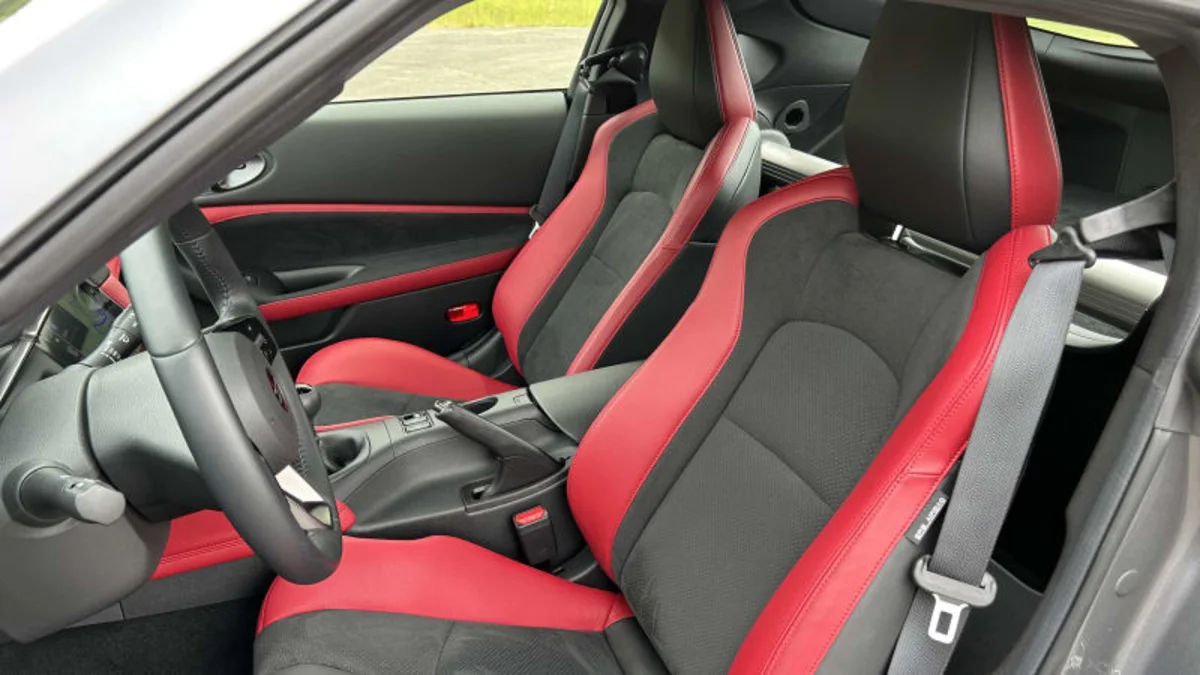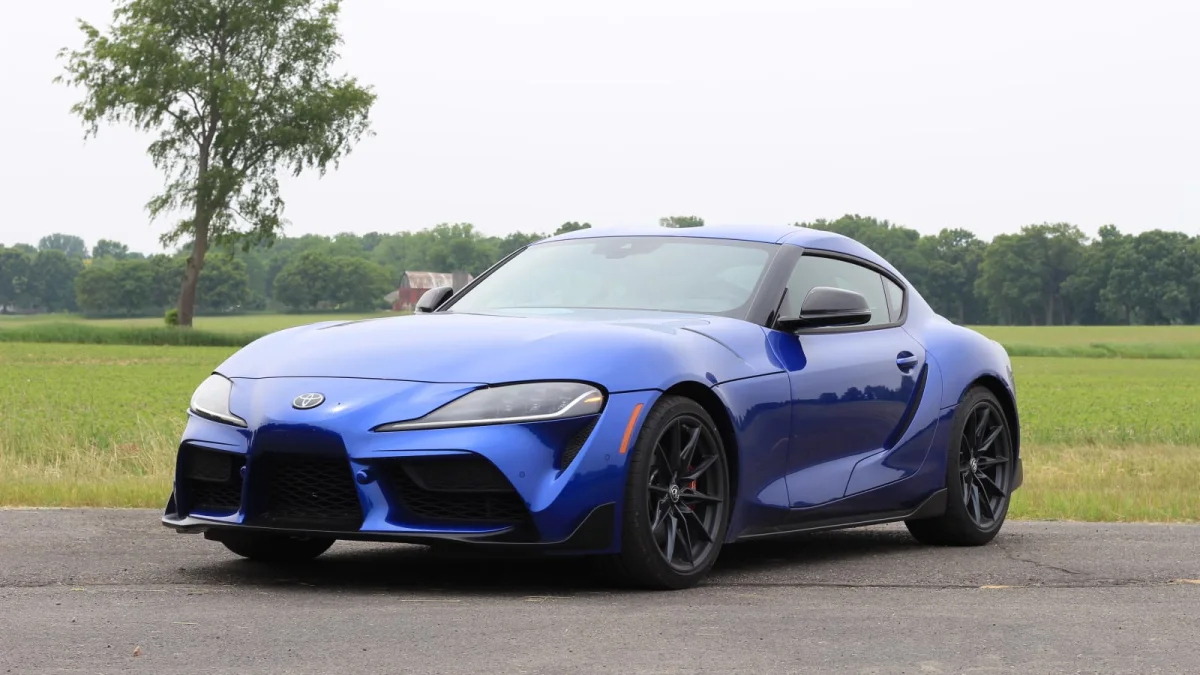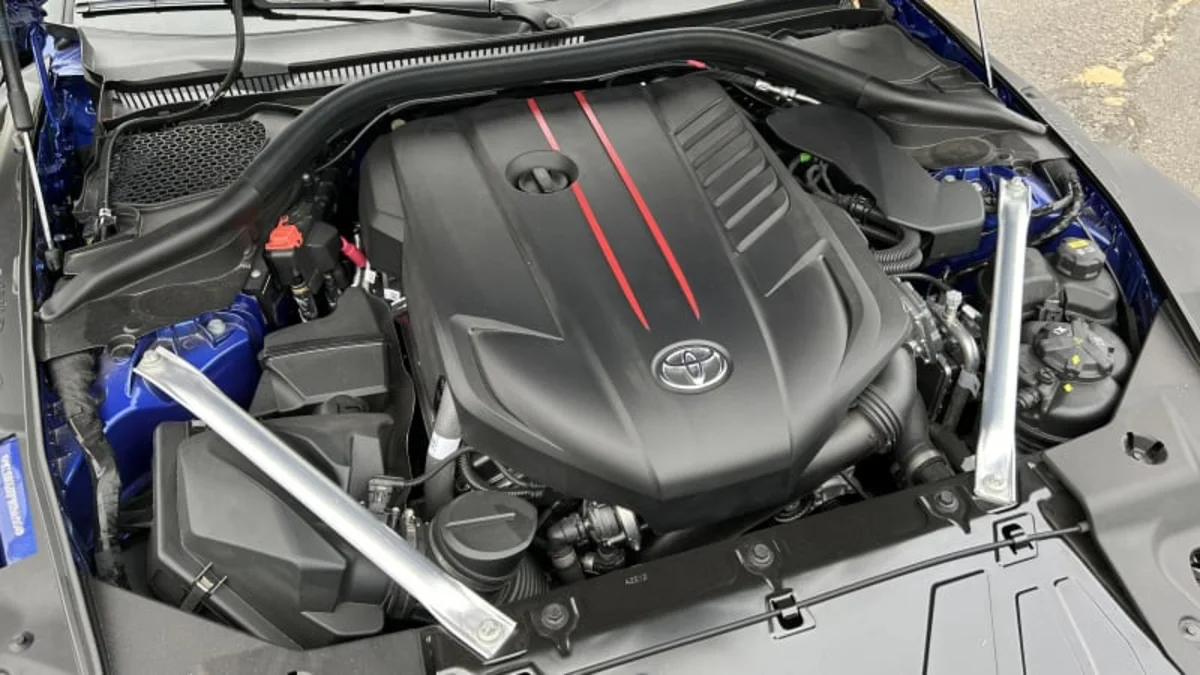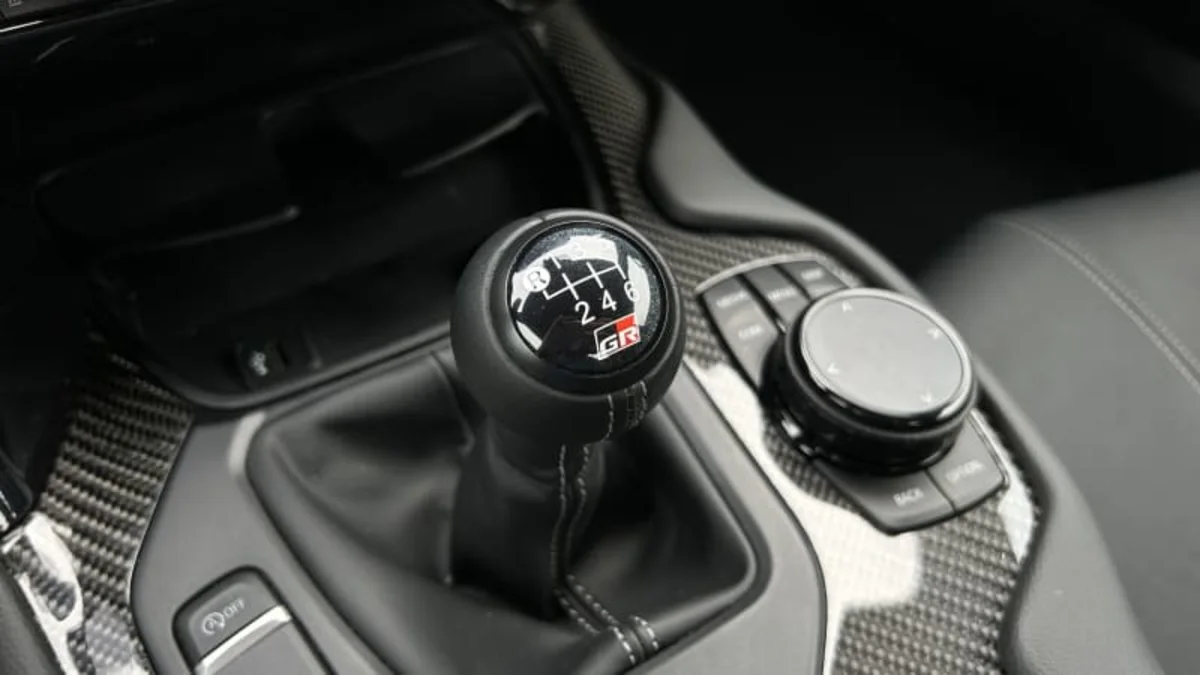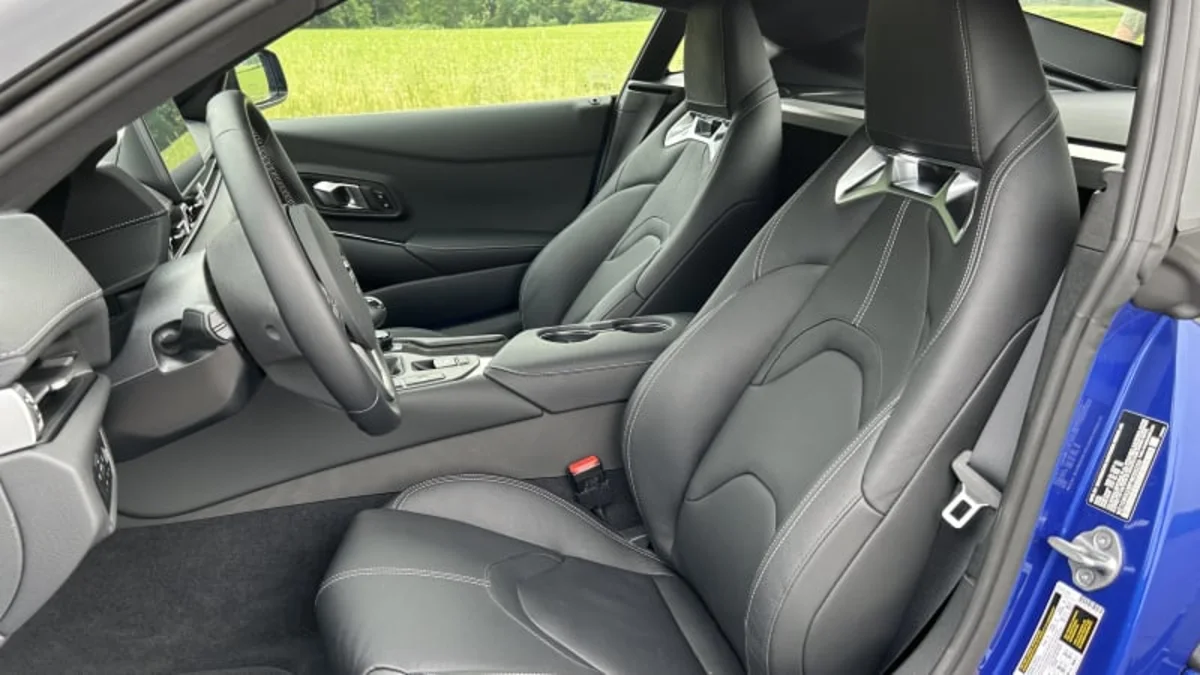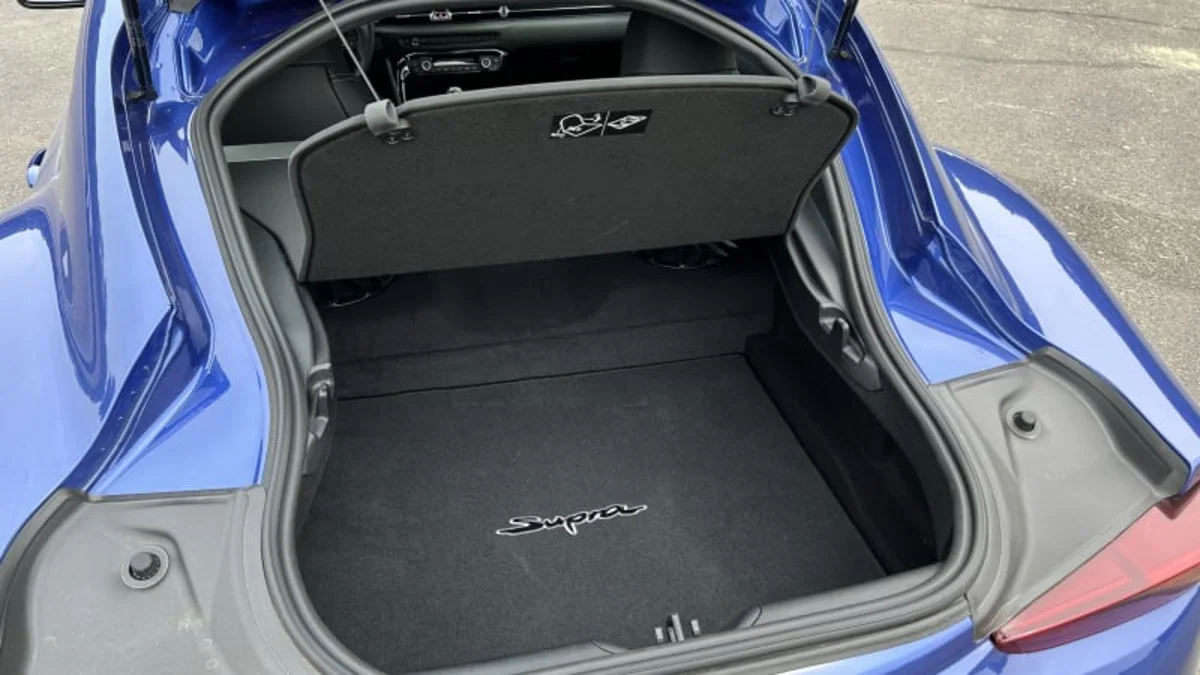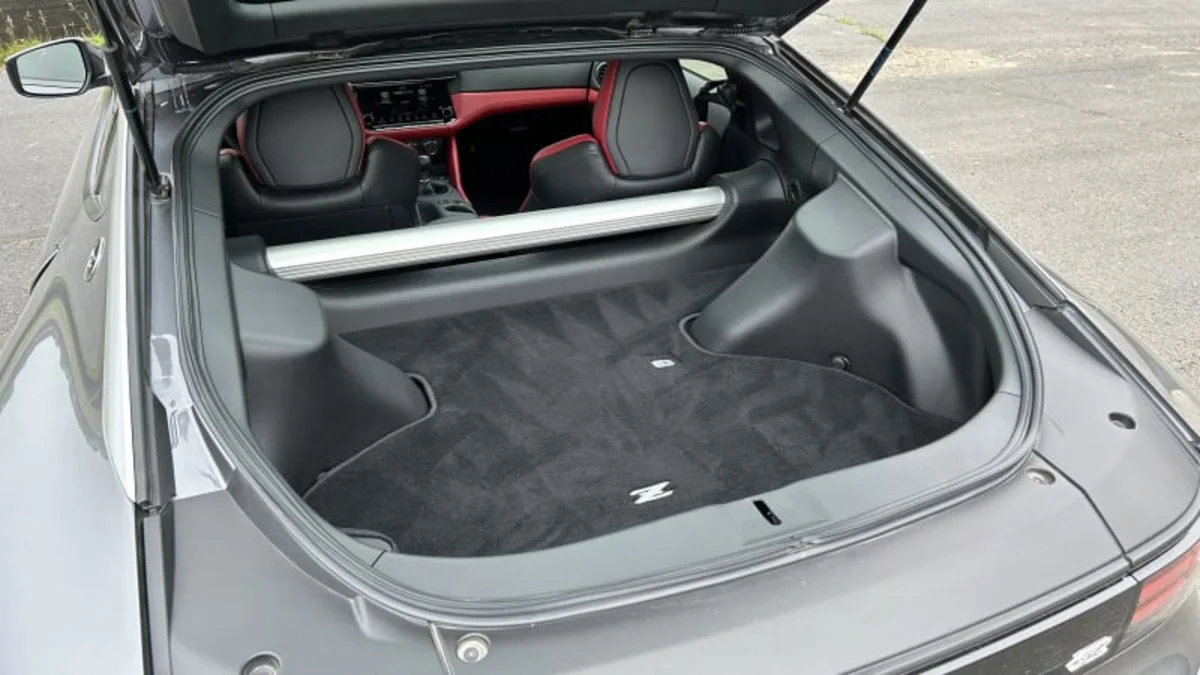PINCKNEY, Mich. — You might hear this a lot these days, but it bears repeating: The glory days of internal combustion performance vehicles are right now. That fact is evident all across the industry, but the pair of shift-your-own, two-seat sports cars before us — the 2023 Toyota GR Supra 3.0 and the 2023 Nissan Z Performance — are shining examples of the current state of affairs.
Six cylinders. Six-speed manuals. Rear-wheel drive. Long hood, short deck. Can’t lose?
Well, somebody has to lose, because somebody’s going to win. Despite us being grateful for their mere presence, both of these cars have their share of controversies. BMW jokes are still freely bandied about regarding the built-in-Austria Supra. That new six-speed manual for 2023? Yeah, it’s from the BMW parts bin, but like the rest of the car, Toyota ripped it apart and re-jiggered it to its own standards. Haters can continue to hate, but they’re missing out on a seminal sports car over a philosophical argument.
Then there’s the Z that, while it looks brand-new, is still built on the ancient 370Z platform and shares way more parts with the old coupe than you might care for. Sure, it’s a Nissan through-and-through, but how dare Nissan try to reduce, reuse and recycle when engineering its “all-new” Z. Once again, shrug.
The bottom line with sports cars like these two should always be how they comport themselves on the road, not the circumstances around how they were born. We can all have a laugh at the Supra’s BMW iDrive infotainment system and the Z’s 2010-spec climate controls, but those factors wouldn’t determine the winner here. These storied nameplates demand that it’s all about the drive, so we drove the wheels off of them and weighted our score sheets to reflect the importance of driver-focused elements: acceleration, braking, steering, handling, gearbox, ride, seats and driving position, fun to drive and value. In the end, it was clear which left a lasting impression as the attainable two-seat Japanese sports car to get.
Second Place: 2023 Nissan Z Performance
It’s painful to say, but the new Z just isn’t the world-beater that its enthusiast darling of a design suggests it might be. The powertrain isn’t the problem. Nor is it the interior styling or tech. Unfortunately, it’s the chassis holding the Z back from greatness. Criticism over its lack of platform development is well warranted, because under that shiny new sheet metal is a sports car that isn’t as sorted as its closest competition.
The Z starts to feel a little uncomfortable as soon as you settle into its well-bolstered bucket. Instead of sitting in the car, it feels much more like you’re sitting on top of it. This sensation follows you around in all of its movements. It takes considerable seat time before we really start to get attuned to the way the Z’s body moves through corners whereas the Supra instantly feels natural. There’s a sense of imposter syndrome from the chassis that starts on initial turn in and continues through corner exit and consecutive corner transitions. Its chassis never seems to settle down, and it’s just plain slower to respond to inputs than the Supra. Sheer grip is present from the Bridgestone Potenza S007 summer tires, but the Z’s softer and bouncier underpinnings don’t inspire confidence in the driver to find it.
Instead of driving like the sports car it looks like, the Z’s character is slanted toward the grand touring side of the equation. The only problem there is that its ride away from winding roads isn’t a beacon of comfort either. The monotube, passive dampers try to do everything well, but they end up being the champion of nothing in particular. Compared to the Supra, the Z bobs up and down on poor pavement and crashes harder over heaves in the road. It’s in search of a greater focus, one that the upcoming Nismo model could provide.
On the upside, the 400-horsepower 3.0-liter twin-turbo V6 is violence distilled into engine form. The Z’s 18-horsepower advantage over the Supra feels more like 30 driven back-to-back, and the way this boosted powerplant delivers its shove is unrelenting from the moment peak torque hits at 1,600 rpm. The V6 might be all intake and no exhaust in the noise game, but we could hardly care as the tires screech all the way through first, part of second and chirp once more into third. And while Nissan did improve the Z’s gearbox over the 370Z, it’s still lacking in precision and feel through the gates. The clutch isn’t much better; its long travel, awkward bite point and aforementioned excitable engine making it more difficult to be smooth in both everyday and hard driving in the Z, too. The same can’t be said for the Supra’s superbly modified six-speed gearbox and silky-smooth drivability.
One place you might not have expected a win from the Z is its tech package, but the Supra’s woefully dated iDrive 6 infotainment system leaves Toyota with a big impediment here. While Z owners get to enjoy both wireless Apple CarPlay and Android Auto, Supra buyers are limited to only wireless Apple CarPlay in an infotainment system that is now several whole versions out of date (though to be fair, we don’t exactly love the latest systems of Toyota or BMW). Nissan was even able to sort out how to combine adaptive cruise control with a manual transmission. Toyota does pair its whole driver assistance suite (with adaptive cruise) with a manual in the GR Corolla and , but the Supra manual offers no such luxury. Hint: That’s because BMW doesn’t offer adaptive cruise with its manual-equipped cars either.
Other niceties like the colorful interior options and cheaper price scored other points in the Z’s favor, but ultimately, both the numerical grading and our hearts put the Z in second.
First Place: 2023 Toyota GR Supra 3.0 MT
Just like the Z, settling into the Supra’s cabin for the first time takes some getting used to. The view out the letterbox windshield compresses your perspective of the world ahead. The cupholders are just where your elbow naturally falls in between shifts. Don’t even think about rolling the windows down much further than halfway, either, thanks to the lovely wind buffeting that comes on around 45 mph.
It’s easy to forget all that once you wring the Supra’s 382-hp 3.0-liter turbocharged inline-six out to its 7,000-rpm redline a few times. It’s impossible not to be enamored. The Supra’s engine doesn’t provide the full-on, low-rpm sucker punch of torque that the Z does, but it’s still the more satisfying engine on hand here. BMW does inline-sixes better than anybody, and the smooth power delivery, sonorous engine note and pure power band make it an engine we fall more in love with every go-around. And amazingly, we think Toyota has nailed the sound of this engine better than BMW. It has a cleaner, louder and slightly higher-pitched note than similar Bavarian-branded versions. The crisp pops on deceleration are the perfect topping to the Supra’s sonic dish.
And yes, this engine was intoxicating before we could control it ourselves with the notchy, short-throw six-speed Toyota added to the equation for 2023. Now? It’s safe to say the Supra 3.0 manual is one of the best ways you can spend $60,000. BMW manual transmissions have never been a gold standard, but Toyota is proof that with a few tweaks they can be turned into an example of how a proper sports car transmission should feel with tight, clear gates and light action.
The Supra’s chassis is just as addicting to toy around with as ever, too. Its rear wheels squirm underneath your butt as the front end slightly raises and goes barreling into a corner. Start to dial in some steering angle, and whoops, that was too much! The Supra’s faster and more accurate steering rack makes the Z feel like it’s going around corners in slow motion. Both telegraph a slightly unsatisfactory amount of road feel back to the driver, but the Supra’s steering is what we kept coming back to as the winner for how dialed in and connected it felt to the road. The well-shaped and supportive seats, short-diameter steering wheel and low seating position all provide a greater sense of closeness to the machine around you, translating to more driving confidence. You think less when you’re driving the Supra versus the Z, which is the mark of a good driver’s car.
There’s no debate on which platform is more rigid and responsive to quick inputs, and Toyota took advantage of its stiffer structure and tuned in more forgiveness to its adaptive dampers than the Z’s passive shocks are capable of providing. We still wish the Supra could shrug off major bumps and rough spots better than it currently does, but the dual personality afforded by adaptive dampers is a big tool missing from the Z’s belt. Broken city streets are better sopped up and more tolerable in the Supra than the more rough-around-the-edges Z.
If used as a daily driver, the Supra is more useful than the Z in several key ways, too. You can actually fit a couple of duffels, but the silly, shallow load floor of the Z makes it difficult to get much more than a couple of duffels in the rear. Neither have good interior storage options, but Toyota wins for a spot to put your phone with its wireless charging cradle. Weirdly, the Z offers no wireless charging despite the wireless smartphone connection tech. Count that as another small victory for the Supra.
Price is one of the only categories where the Toyota doesn’t confidently defeat the Nissan. At $59,040 as tested, the fully-loaded Supra on hand is considerably more expensive than the $52,360 fully-loaded Z, but every penny extra you pay for the Toyota is worth it. It may be more expensive, but that doesn’t mean it’s a poor value. Adding the manual option this year ensures there’s no de-facto win for the Z due to transmission, but even if it were only an automatic, the Supra’s chassis and refinement would’ve been enough to still make it a winner. And so it wins over the retro-tastic Z, which turned out to be a little too retro for its own good.
Related video:






